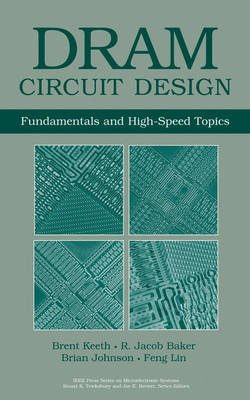IEEE Press Series on Microelectronic Systems
1 primary work • 2 total works
Book 16
This work is an important continuation to "CMOS: Circuit Design, Layout, and Simulation". The power of mixed-signal circuit designs, and perhaps the reason they are replacing analog-only designs in the implementation of analog interfaces, comes from the marriage of analog circuits with digital signal processing. This book builds on the fundamental material in the author's previous book, "CMOS: Circuit Design, Layout, and Simulation", to provide a solid textbook and reference for mixed-signal circuit design. The coverage is both practical and in-depth, integrating experimental, theoretical, and simulation examples to drive home the why and the how of doing mixed-signal circuit design.
Some of the highlights of this book include: a practical/theoretical approach to mixed-signal circuit design with an emphasis on oversampling techniques; an accessible and useful alternative to hard-to-digest technical papers without losing technical depth; coverage of delta-sigma data converters, custom analog and digital filter design, design with submicron CMOS processes, and practical at-the-bench deadbug prototyping techniques; and hundreds of worked examples and questions covering all areas of mixed-signal circuit design. A helpful companion Web site provides worked solutions to textbook problems, SPICE simulation netlist examples, and discussions concerning mixed-signal circuit design.
Some of the highlights of this book include: a practical/theoretical approach to mixed-signal circuit design with an emphasis on oversampling techniques; an accessible and useful alternative to hard-to-digest technical papers without losing technical depth; coverage of delta-sigma data converters, custom analog and digital filter design, design with submicron CMOS processes, and practical at-the-bench deadbug prototyping techniques; and hundreds of worked examples and questions covering all areas of mixed-signal circuit design. A helpful companion Web site provides worked solutions to textbook problems, SPICE simulation netlist examples, and discussions concerning mixed-signal circuit design.
DRAM Circuit Design - Fundamental and High-Speed Topics
by Brent Keeth, R. Jacob Baker, Brian Johnson, and Feng Lin
Published 24 November 2000
A modern, comprehensive introduction to DRAM for students and practicing chip designers Dynamic Random Access Memory (DRAM) technology has been one of the greatestdriving forces in the advancement of solid-state technology. With its ability to produce high product volumes and low pricing, it forces solid-state memory manufacturers to work aggressively to cut costs while maintaining, if not increasing, their market share. As a result, the state of the art continues to advance owing to the tremendous pressure to get more memory chips from each silicon wafer, primarily through process scaling and clever design. From a team of engineers working in memory circuit design, DRAM Circuit Design gives students and practicing chip designers an easy-to-follow, yet thorough, introductory treatment of the subject. Focusing on the chip designer rather than the end user, this volume offers expanded, up-to-date coverage of DRAM circuit design by presenting both standard and high-speed implementations.
Additionally, it explores a range of topics: the DRAM array, peripheral circuitry, global circuitry and considerations, voltage converters, synchronization in DRAMs, data path design, and power delivery. Additionally, this up-to-date and comprehensive book features topics in high-speed design and architecture and the ever-increasing speed requirements of memory circuits. The only book that covers the breadth and scope of the subject under one cover, DRAM Circuit Design is an invaluable introduction for students in courses on memory circuit design or advanced digital courses in VLSI or CMOS circuit design. It also serves as an essential, one-stop resource for academics, researchers, and practicing engineers.
Additionally, it explores a range of topics: the DRAM array, peripheral circuitry, global circuitry and considerations, voltage converters, synchronization in DRAMs, data path design, and power delivery. Additionally, this up-to-date and comprehensive book features topics in high-speed design and architecture and the ever-increasing speed requirements of memory circuits. The only book that covers the breadth and scope of the subject under one cover, DRAM Circuit Design is an invaluable introduction for students in courses on memory circuit design or advanced digital courses in VLSI or CMOS circuit design. It also serves as an essential, one-stop resource for academics, researchers, and practicing engineers.

